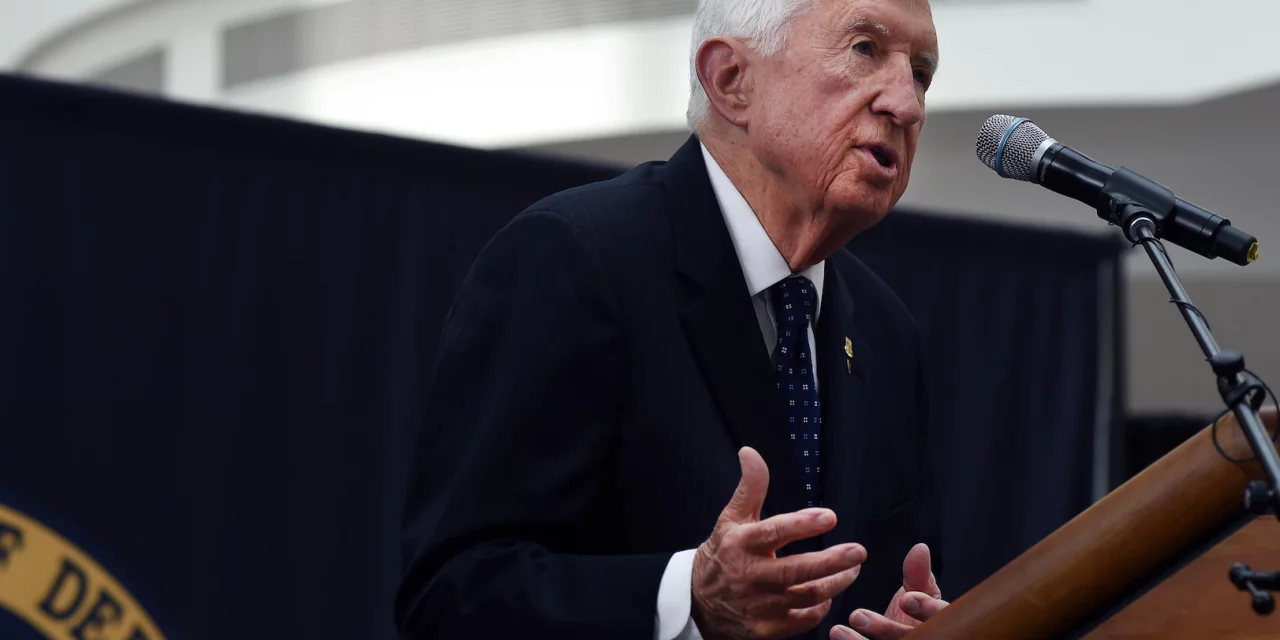In 2017, the Army National Guard Headquarters near Washington, D.C., was named in honor of Herbert Temple
PALM DESERT — Resident Herbert R. Temple Jr. is considered “The father of the modern-day National Guard.” Those were the words spoken to me by Maj. Gen. David Baldwin, who spent the past 11 years in command of The Military Department of the State of California, it’s Army, Air, and state Guard forces.
Pvt. Temple joined the California National Guard in 1947. In 1950 Temple was sent to the Korean War and helped push both North Korean and Chinese Armies back above the 38th parallel. Temple left South Korea on a stretcher.
Temple chose to stay on as a citizen-solider and earned a direct commission to 2nd Lieutenant. The Korean War shaped his leadership style, and he was committed to a new level of readiness for his soldiers in the California National Guard.
Temple once said to me, “We fought the Korean War with leftovers from rations we ate to the rifles we carried.” Temple would insist that Guard soldiers and airman fight the way they trained. He also insisted Guard units across America had the equipment and training to serve domestic emergencies and war fighting tasks.
What many National Guard senior leaders refer to as “The Temple Doctrine” was about equipping, training, and exercising the Guard both domestically and internationally. He wanted a force ready to move out and make a difference.
Temple was appointed the Chief of the National Guard Bureau in Washington, D.C., by President Ronald Reagan. The President knew and respected Temple. He was Gov. Reagan’s military aide and the first director of the California Office of Emergency Services under Reagan.
Now a Lieutenant General (3 star), Temple worked with the Secretary of Defense, Service Secretaries of the Army and Navy along with the Joint Chiefs of Staff to build a National Guard in the 50 states and four U.S. territories that could respond to domestic emergencies and international ones simultaneously.
The House and Senate played major roles in equipping the Guard. So did the National Guard Association of the United States. State Governors also realized the benefits of a well-trained and equipped Guard and helped Temple get the personnel, training, and equipment they needed.
After 43 years in his National Guard uniform, he retired in 1990 and shortly after he returned home to California with wife Pat. Temple watched the Guard he prepared and rebuilt with President Reagan and G.W. Bush perform with distinction in aerial and ground battles. Plus, fight fires, respond to floods, hurricanes, tornadoes, and more.
Today the U. S. Army and the U. S. Air Force rely heavily on the National Guard. About 50% of combat operations during Desert Storm, and the Global War on Terror are fought and supported with Army and Air National Guard Troops.
Temple is so highly respected that his name adorns military installations on two California Military Installations at Camp San Luis Obispo and The Readiness Center in Moreno Valley. Additionally, Training Facilities at Fort Leavenworth, Kansas and Camp Robinson, Arkansas also bear his name. The Pentagon and Army weren’t done honoring Lieutenant General Temple just yet.
They named the Army National Guard Headquarters near Washington, D.C. in his honor in 2017. Every former Chief of the National Guard Bureau alive was present to honor this humble citizen solider. Also joining in the ceremony was former U.S. Attorney General Ed Meese amongst many distinguished guests.
Each General or service secretary that spoke at these numerous naming ceremonies credit Herbert R. Temple Jr., with transforming the Army and Air National Guard into a force of citizen-soldiers that are “Always Ready and Always There.”
Lt. Gen. Temple still “hits the deck at 0530” and heads to the gymnasium in Palm Desert. He is an inspiration to many of us who served with and for him.
Image Sources
- Herb Temple: National Guard





![Enrolling Now, Rewarding Careers Ahead [Sponsored]](https://ukenreport.com/wp-content/uploads/2024/04/COD_heroes_1-1385-2-440x264.jpg)

